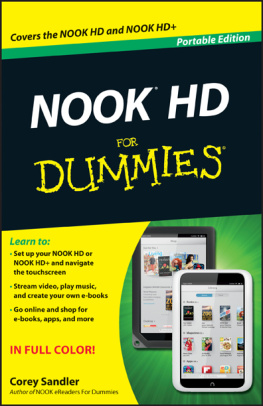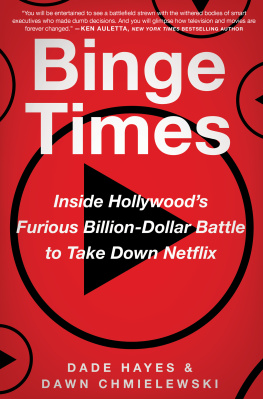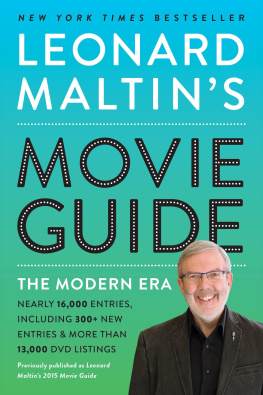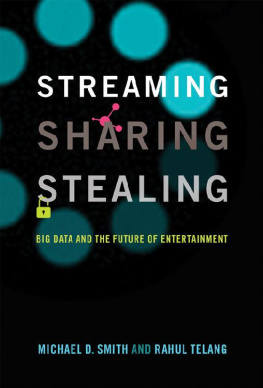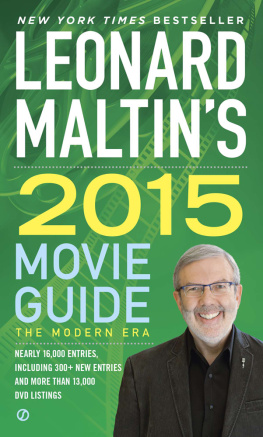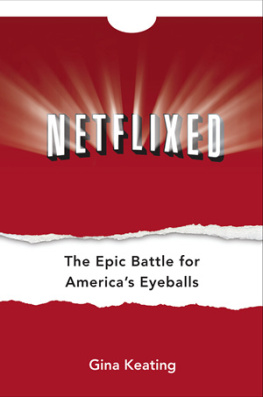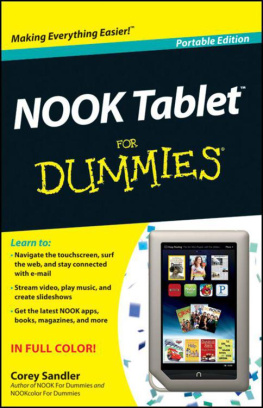The Primetimer Guide to Streaming TV
Aaron Barnhart
Primetimer
Hollywood
The Primetimer Guide to Streaming TV Copyright 2022 by Aaron Barnhart. All Rights Reserved.
Contents
Foreword by Tim Brooks
Television programming has evolved greatly in its 70-plus years of wide availability in the United States, and so has the documentation of that programming. Whats on? has been a question viewers have been asking from the start, even in the 1940s when they might have had only one or two channels available, and those were on only a few hours per day.
Now it seems like we have what? more TV programs than stars in the sky or grains of sand on the beach. Perhaps it is time for a curated guide, a compilation of what is best and where it can be found in this complicated era of streaming TV.
Oddly enough, our grandparents had the same problem, in a somewhat different way. For them television shows were an addition to the hundreds of network radio shows they were already familiar with; how could they find out what was on the new medium and where to find it?
To serve this need TV Guide was launched as a local magazine in New York in 1948. It merged with similar magazines in other markets to become national in 1953, and by the 1960s it was the most widely circulated publication in the country, with 19 million subscribers. It dealt only with current TV, which was appropriate for the time since so few shows were rerun (most early shows were broadcast live and not rerun at all; later filmed shows were rerun only selectively, usually by local stations late at night).
In the mid-1970s when Earle Marsh and I approached publishers about a compendium of all TV shows, both past and present, we were met with a wall of rejection. No one cares about old TV, we were told, and for current ones just look at the listings. But viewers did care about old TV, the shows they remembered, as well as current favorites. That became blindingly clear when NBC aired the first major clip show, its fiftieth anniversary special in 1976 with hundreds of clips from older TV shows. It was an enormous ratings hit and CBS and ABC quickly followed with their own anniversary shows, plus assorted retrospective specials.
When our Complete Directory to Prime Time Network TV Shows finally came out in 1979 it was an immediate best seller. The Complete Directory went through nine updated editions from 1979 to 2007, documenting in a convenient format the flood of new and older shows that were now becoming available on cable TV as well as on videotape and later DVDs (remember them?). The latest edition, in 2007, was 1,832 pages long!
But what was a flood of programming has now become a tsunami, with the advent of streaming services like Netflix and Hulu (and many others) and their vast array of shows both new and old. It is time for someone to give us a guide to the best of this huge new wave of programming and Aaron Barnhart is the ideal person to do that. A friend of the Complete Directory for many years, he has been writing knowledgeably about televisions evolution for three decades. With The Primetimer Guide to Streaming TV he provides a roadmap to this newest source of programming that is spreading rapidly across the country.
Welcome to the newest chapter in the evolution of television, with this handy guide to the best of what it offers.
Tim Brooks, a former television executive, is a noted historian of radio, television and the recording industry. He is the co-author (with Earle Marsh) of The Complete Directory to Prime Time Network and Cable TV Shows.
Editors Note
I thank Tim Brooks for his kind words in the Foreword, but I must set the record straight: This isnt my book. At least, its not entirely my book. The Primetimer Guide to Streaming TV would not have happened without the contributions of many others whose names are listed below and on the following pages.
In 2018, as I was returning to the world of professional TV watching, my friend Tim Goodman then the chief television critic for The Hollywood Reporter wrote a series of columns arguing for a different approach to our line of work. The endless stream of content was stressing out viewers, Tim observed, and in this environment critics should be acting more as curators, imposing order on chaos, hand-selecting things to watch based on what was worthwhile and appropriate for various tastes and time constraints. So let me begin with a tip of the hat to Tim for his advocacy of an idea that has informed my work at Primetimer and is at the heart of this ambitious guide you are reading now.
A number of friends read drafts of this book and gave valuable feedback: Sue Trowbridge, Carol Powers, Gavin Fritton, Erin Clermont, Susan Cox and Dave Hokansen have my grateful thanks. Howard Mortman, Katherine Pongracz, Michael Schneider and Jason Snell were generous with insights. My weekly radio interrogations from Chip Franklin kept me on my toes.
Support, both financial and emotional, is essential to any successful book project. I must thank two people above all for their support of The Primetimer Guide to Streaming TV . The first is my partner in this venture, Jed Rosenzweig, the publisher of Primetimer, who brought me out of retirement and made writing about television fun again. Had it not been for Jeds constant encouragement, I never would have attempted to surf this 100foot wave.
Attempting a project of this magnitude is one thing, finishing it is another. And there is simply no way I would have been able to complete this project without Diane Eickhoff, my wife and companion in all things intellectual, emotional and spiritual. She helped me through my transition back to the world of criticism and she lived with this book for its entire gestation. Diane likes to say that she could wake me from a deep slumber and within moments get me talking about almost any subject (knowledgeably or not). Yet when it comes to describing my love for her and the debt that I owe her, words fail me. I have dedicated this book to Diane.
Aaron Barnhart
January 2022
Acknowledgements
Behind this book is a large database of television shows and movies that managing editors Mark Blankenship, Brianna Westervelt, Jed Rosenzweig and I built from scratch. The editing skills of these three were essential to getting this guide done, and the finished product is immeasurably better because of them.
I am indebted to these Primetimer editors and contributors whose analysis and reviews were the basis for many of the entries in Part II: Tara Ariano, Sarah D. Bunting, Andy Dehnart, Jon Hein, Joe Reid, Claire Spellberg Lustig, Mike Attebery, Alex Welch, Andy Hunsaker, Chris Billig, Chris Feil, Emma Fraser, Jade Budowski, Josh Zyber, Jessica Liese, Kelly Kessler, Kevin OKeeffe, LaToya Ferguson, Lauren Garafano, Naomi Elias, Omar Gallaga, Stephen Hladik, Thomas J. West III and the incomparable Norman Weiss. In addition, Carol Powers and Una Morera made valuable contributions to this guide as it was being compiled.
The line between television critics and critically-minded viewers has been blurring since I began writing as a fan in the early 1990s. So it was important to me that The Primetimer Guide include the voices of viewers who appreciate good TV, recognize mediocre TV and love discussing the difference. Part II, therefore, also includes insights from the following contributors to our Primetimer Forums (forums.primetimer.com). Their comments appear in the text wherever you see the balloons ().




